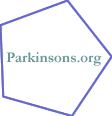
|
|
Parkinson's Disease Information | ||
|
Parkinson's Disease TreatmentAlthough there is no cure for Parkinson's Disease, there are several measures that can be taken to improve a patient's quality of life. These measure include drug and surgical therapy. The other options available include making lifestyle changes, and employing physical and speech therapy. One of the very first options suggested by doctors is medication. There are several drugs available. All with different roles.
Most people manage Parkinson's Disease with medication. But in some cases severe symptoms can heavily reduce one's quality of life and sometimes the medication’s side effects are difficult to deal with. In situations like these, a surgical alternative may be sought. There are several surgical options available, these include:
Just like any other surgery, there are risks. The major risk is bleeding in the brain that would cause a stroke. A stroke usually occurs during the surgery or a few hours after. The effect of the stroke can range anywhere from permanent brain damage to mild or permanent weakness and even death. When an electrode is implanted it can become dislodged but it is relatively easy to locate using MRI or CT scans. Additional surgery will be required to replace the electrode, increasing the risk of having a stroke or getting an infection. Side effects include:
Speech therapy has been found to be effective for some Parkinson's Disease patients. It is used to treat Dysarthrya (difficulty speaking) and Dysphagia (difficulty swallowing). The best way to get therapy that is specifically tailored for Parkinson's Disease patients is to visit an experienced speech pathologist. Parkinson's Disease treatment has come a long way. New technologies and techniques are improving the quality of life of many Parkinson's Disease patients. |
||||||||||||||||||||||||||||||||||||||||
|
|
|||||||||||||||||||||||||||||||||||||||||
|
The content of this web site is intended to convey general educational information and should not be relied upon as a substitute for professional healthcare advice. More information. 2002-2012©Parkinson's Disease Information. |
|||||||||||||||||||||||||||||||||||||||||